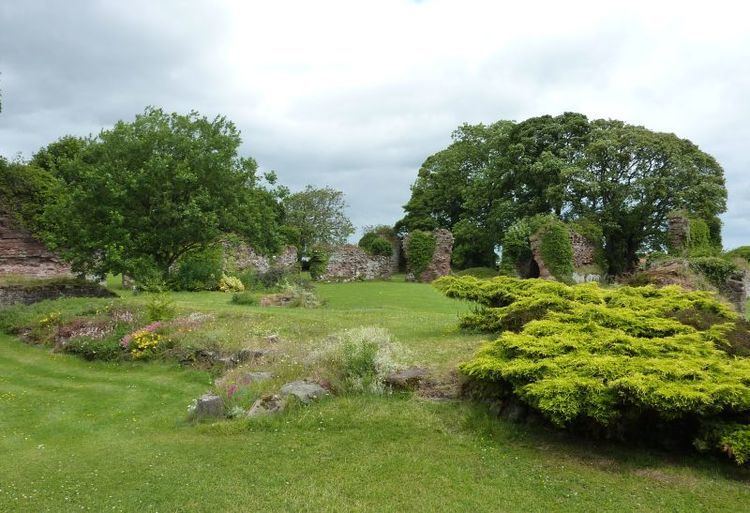 | ||
Similar Balmerino Abbey, Kelso Abbey, Falkland Palace, Claypotts Castle, Clatchard Craig | ||
Lindores abbey
Lindores Abbey was a Tironensian abbey on the outskirts of Newburgh in Fife, Scotland. Now a much reduced and overgrown ruin, it lies on the southern banks of the River Tay, about 1-mile (1.6 km) north of the village of Lindores.
Contents
The abbey was founded as a daughter house of Kelso Abbey about 1191 (some sources say 1178), by David, Earl of Huntingdon, brother of William the Lion. The first abbot was Guido, Prior of Kelso, under whom the buildings were mostly completed. The church, dedicated to the Blessed Virgin and St. Andrew, was 195 feet (59 m) long, with transepts 110 feet (34 m) long. Edward I of England, John Balliol, David II, and James III were among the monarchs who visited Lindores at different times.
The earliest record of scotch whisky cited by the exchequer roll for 1494 is a commission from King James IV to Friar John Cor of Lindores Abbey to make about ‘eight bols of malt’ or 580 kg of aquavitae.
The abbey was sacked by a mob from Dundee in 1543, and again by John Knox and his supporters in 1559. In the following years the Abbey buildings were quarried as a source of building stone for Newburgh, and a number of architectural fragments are visible built into later structures in the town.
The main upstanding remains of the Abbey are: one of the gateways leading into the monastic enclosure; the groin-vaulted slype, leading from the cloister garth to the exterior of the Abbey; and parts of the chancel walls and western tower of the church, although the ground plan of the whole structure can still be traced. Sections of the imposing precinct wall which once enclosed the abbey can also be seen in fields to the south.
Wooden panels of the early 16th century survive from the Abbey in the Laing Museum, Newburgh and, reset in a 19th-century cabinet, in St. Paul's Episcopal Cathedral, Dundee.
